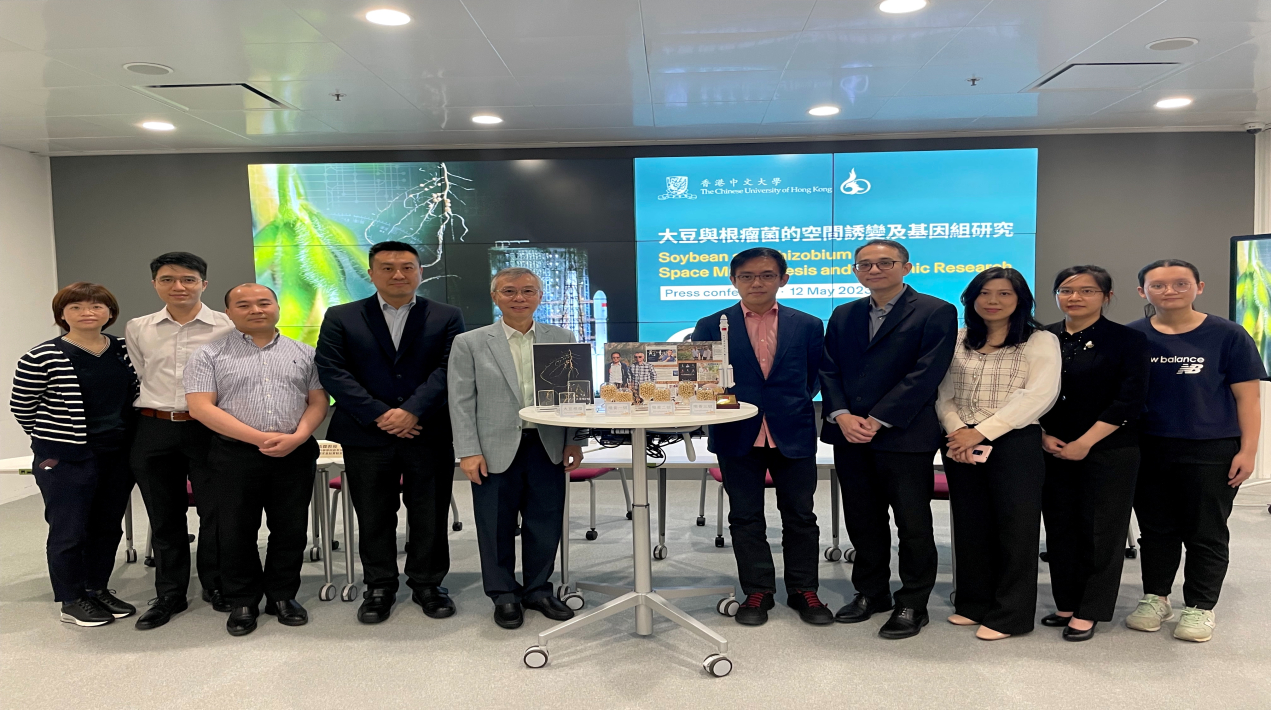
A Chinese University of Hong Kong (CUHK) team, led by Professor Lam Hon-Ming, Choh-Ming Li Professor of Life Sciences and Director of the State Key Laboratory of Agrobiotechnology, has successfully transported rhizobia specimens (soybean nitrogen-fixing bacteria) into space.
This ground-breaking achievement was made possible through collaboration with the China Manned Space Agency, China Resources Research Institute of Science and Technology (CRRIST), and a space biotechnology company. The specimens were launched aboard the Tianzhou-6 cargo spacecraft on 10 May 2023 and have now reached the Chinese space station Tiangong. This marks the first agricultural research project from Hong Kong to be sent to space, establishing a significant milestone in the fusion of aerospace and agricultural technologies.
Rhizobia, a type of bacteria known for its ability to establish nodules with legume roots and convert atmospheric nitrogen into usable compounds for plants, play a vital role in nitrogen fixation. In this project, the team is focused on investigating the effects of the space environment on rhizobia through mutagenesis and conducting space biology research.
The objective is to understand how rhizobia adapt and change under extra-terrestrial conditions. Following the collection of rhizobia samples from space, the research team plans to conduct further studies with the aim of developing stress-tolerant rhizobia strains that exhibit enhanced nitrogen-fixing efficiency. The ultimate goal is to optimize the utilisation of rhizobia, reduce reliance on chemical nitrogen fertilizers, improve soil conditions, and contribute to a sustainable environment.
The research team has been devoted to soybean research for over 25 years. The team has successfully developed three new stress-tolerant soybean cultivars, Longhuang 1, Longhuang 2 and Longhuang 3, which have been distributed to local farmers in Gansu province at no cost since 2016.
To further advance soybean breeding technology, Professor Lam is collaborating with CRRIST and the space biotechnology company and planning to send the cultivars into space as a complementary experiment, to investigate any induced mutagenesis under space conditions.
The team will conduct a meticulous analysis of the precious returned specimens to explore the mutation mechanism of soybean seeds in space, aiming to achieve breakthroughs in agricultural technology. The team also plans to screen for new soybean seed materials with promising application prospects, aiming to enrich national strategic agricultural germplasm resources.
Professor Lam Hon-Ming envisions the Tianzhou-6 spacecraft not only as a carrier of his agricultural project but also as a representation of Hong Kong’s scientific and innovative aspirations. He believes that this endeavour symbolises Hong Kong’s role as an international hub for science and innovation.
The project’s objective is to merge agricultural and aerospace technologies to develop novel strategies applicable to agricultural fields. By integrating cutting-edge technology with traditional wisdom, the project aims to push technological boundaries, achieve breakthroughs in agrobiotechnology, and enhance agricultural productivity. The intended beneficiaries are farmers and the wider community, while simultaneously highlighting Hong Kong’s scientific research capabilities to the global stage.
The advancement of aerospace breeding and its associated technologies serves as a crucial link, bringing together China’s strategic agricultural technology and state-of-the-art aerospace advancements. Through dedicated efforts in expanding knowledge and capabilities, as well as promoting innovative research on germplasm resources in space, significant strides are being made towards technological breakthroughs.
These breakthroughs not only contribute to human health but also contribute to the preservation and well-being of our planet. By harnessing the power of aerospace technology, the project is empowering scientific advancements that have the potential to safeguard both human and planetary health.
















